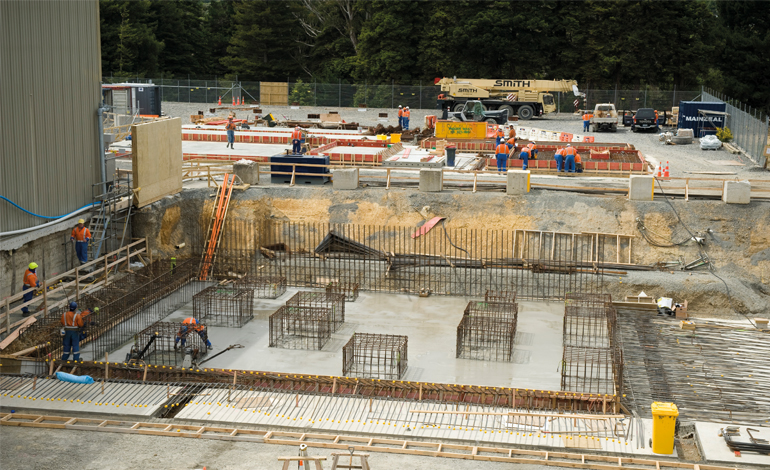One of the most earthquake-proof buildings in the world was built here in our own backyard. Alan Titchall explains.
Electricity flows between the South and North island through a heavy voltage direct current link (HVDC) between the Benmore power station in the south and the Haywards converter station (called a Pole) just outside of Wellington.
Electricity is normally transported as alternating current (AC), but when it comes to transmitting large amounts of power over long distances, then high-voltage direct current is less expensive in terms of infrastructure and creates less power loss during transmission.
The Germans developed the first DC systems (across Berlin) during the war and New Zealand, during the 1950s, developed one of the longest DC links in the world.
Our HVDC inter-island link exhibits two separate circuits (Poles) with one converter station at each end. One at Benmore to convert AC current into DC and another at Haywards to convert it back to AC for transmission all the way up to Auckland and beyond.
These Poles have been upgraded three times since the HVDC link was first commissioned in 1965. They were upgraded in 1992, and Pole 3 was completed about nine years ago and housed in buildings featuring the world’s latest and best earthquake-resistant technology. The reason – if Wellington collapses like a pack of cards, the power will still continue to Auckland to keep the country running.
Transpower’s $672 million Pole 3 project, built by Siemens, lifted capacity of the HVDC link from the 700MW to 1200MW in 2014. Interestingly, Pole 1 was stood down in late September 2007, but wasn’t decommissioned until late 2011 after the World Cup, so it acted as an emergency back-up in case there was an embarrassing blackout while the eyes of the world were following the sporting event.
Siemens was the main contractor and Mainzeal its principal subcontractor for civil works. Brian Perry Civil was in charge of the site improvements (which began in January of 2010), which won it an Encore (Environment, Conservation and Restoration) Award from the Minister of Conservation at the time, in recognition of the high environmental qualities of the earthworks at Haywards, which occupies a high-profile site near the junction of State Highways 2 and 58 between Lower and Upper Hutt.

The two converter stations, north and south, are structurally similar, both being base-isolated for seismic protection, like Parliament House and the Te Papa Museum. They feature lead-rubber bearings and sliders between the buildings’ base and actual foundations.
Because the Haywards site is on a gully-fill, Mainzeal had to drive piles as much as 25 metres to reach the sold greywacke underneath. The shortest piles are just four metres. The engineering design behind the pile placement was carried out by Wellington firm Aurecon, formerly Connell-Wagner.
The project director for Siemens was Dr Guenther Wanninger, based in Wellington, who concedes that the project represents an ambitious technical and logistical challenge.
I interviewed him at the time for our Energy magazine.
He told me the primary plant at Haywards includes three thyristor valve towers weighing 17 tonnes each and suspended from the ceiling of the 19-metre high valve hall. Six-metre long bushings transfer electricity between the valves and the outside converter transformers, which weigh up to 330 tonnes each.
The major challenge at Haywards, he said was earthquake proofing the new pole housing structure and all equipment installed. Haywards substation sits just 300 metres from a major fault line, and Wanninger said the seismic requirements for the buildings were the highest ever applied worldwide to a new building.
“We had to design this structure to survive a one-in-2500 year earthquake, and that is a massive earthquake,” he said.
Even hospitals in Wellington are only designed for a one-in-500 year earthquake.
Using a design similar to that used in Wellington’s Te Papa museum, which uses base isolators, the foundations of the substation are connected to rock base with concrete columns and, using the principals of stress reduced base isolation: the building sits on two bases separated by foundation sliders.
“We had to apply a diversity of seismic designs to the project … so the buildings can’t all collapse for the same reason.”
Although the design is replicated at Benmore, the seismic requirements at the southern end are not as severe.

